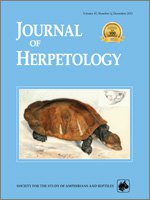Species that exhibit extreme traits can provide valuable insight into the evolution of those traits. Bitis schneideri has the smallest body size of all vipers, reportedly reaching a maximum length of 254 mm. We studied size, sexual size dimorphism, and growth in a population of B. schneideri from the Northern Cape Province, South Africa to better understand these traits in the smallest viperid. We weighed and measured 285 snakes (124 males, 101 females, 60 juveniles) over three austral summers. We recorded a maximum body length of 251 mm and body mass of 38 g. Mean adult female body length (207.4 ± 27.6 mm) was longer than mean adult male body length (191.6 ± 20.2 mm). As predicted, female snakes were heavier bodied than males of the same length, had shorter tails, and had relatively larger heads. Growth rate was rapid and did not appear to differ among the sexes. Individuals reach mean adult body length in approximately 2.2 years, and male snakes are likely to reach reproductively mature size in approximately 10 months. We suggest that sexually dimorphic traits have evolved primarily through fecundity selection for females. Additionally, we propose that the evolution of small body size in B. schneideri is a result of the selective thermoregulatory, foraging, and predator avoidance advantages gained by being small enough to shuffle into sandy substrates.
How to translate text using browser tools
1 December 2011
Morphology, Sexual Dimorphism, and Growth in the Smallest Viperid, Bitis schneideri (Reptilia: Squamata: Viperidae)
Bryan Maritz,
Graham J. Alexander
ACCESS THE FULL ARTICLE

Journal of Herpetology
Vol. 45 • No. 4
December 2011
Vol. 45 • No. 4
December 2011




